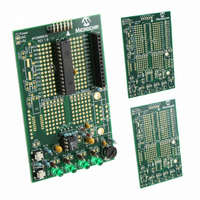DM164130-3 Microchip Technology, DM164130-3 Datasheet - Page 5

DM164130-3
Manufacturer Part Number
DM164130-3
Description
BOARD DEMO FOR PIC16F/PIC18F
Manufacturer
Microchip Technology
Datasheet
1.DM164130-3.pdf
(12 pages)
Specifications of DM164130-3
Main Purpose
Interface, LIN + MCU
Embedded
Yes, MCU, 8-Bit
Utilized Ic / Part
PIC16F, PIC18F
Primary Attributes
Automotive Grade Transceiver
Secondary Attributes
LED Status Indicators
Processor To Be Evaluated
PIC16F, PIC18F
Processor Series
PICxxFIxxx
Tool Type
Demonstration Board
Core Architecture
PIC
Cpu Core
PIC
Data Bus Width
8 bit
Lead Free Status / RoHS Status
Lead free / RoHS Compliant
Lead Free Status / RoHS Status
Lead free / RoHS Compliant, Lead free / RoHS Compliant
Available stocks
Company
Part Number
Manufacturer
Quantity
Price
Company:
Part Number:
DM164130-3
Manufacturer:
MICROCHIP
Quantity:
12 000
With increased electronics penetration across the
broad spectrum of applications within the vehicle, the
number of ECMs continues to expand – taxing the
vehicle's power budget. Some higher end vehicles can
have over 80 ECMs, which means that current loads
are increasing. An increase in battery size to support
the growing power requirements is an alternative to
overcoming this challenge. However, larger batteries do
not always provide a good tradeoff in an environment
where space is limited and weight is critical, due to the
negative impact on fuel consumption.
A better alternative is to use nanoWatt XLP, Microchip's
innovative solution to address the operational power
consumption of the ECMs. Through a unique blend of
design techniques, fl exible power management features
and process technology, nanoWatt XLP technology
allows engineers to manage static, active and average
power consumption.
In those ECMs which consume power when the ignition
is off, using nanoWatt XLP-based PIC microcontrollers,
with industry leading low sleep currents, gives the
system designer the abilty to tackle the power budget
challenges.
Driving nanoWatt XLP into Tomorrow’s Vehicles
PIC MCUs with nanoWatt Technology also support up to
nine oscillator modes, which include:
■
■
■
■
Low Power Safety
In addition to peripherals, products with nanoWatt XLP
have system supervisory circuits specially designed for
battery powered products.
■
■
■
Benefi ts of nanoWatt XLP Technology:
■
■
■
■
Ultra Low Power Wake-up (ULPW) mode
Confi gurable Idle, Sleep and Deep Sleep modes
Advantageous two-speed start-up feature
– Reduces current draw during wake-up.
– Let designers tailor current consumption levels
– Allows seamless transition by running from either
Clock frequency can be switched on the fl y
– Allowing no delay in code execution on transitions
The Deep Sleep Brown-out Reset protects
applications when batteries are depleted and
changed, yet consumes a tiny 45 nA of current
The Real-time Clock Calendar module on products
with Deep Sleep can continue to run provide precise
time for less than 500 nA
Using a dedicated on-chip oscillator, the standard
WDT and Deep Sleep WDT provide protection against
system failure for less than 500 nA.
Sleep currents down to 20 nA
Brown-out Reset down to 45 nA
Watch-dog Timer down to 400 nA
Real-time Clock/Calendar down to 500 nA
and clocking options to fi t any power budget.
of the internal oscillators while an external clock
source stabilizes on start-up. After the external
source has stabilized, the MCU automatically
makes a clock switch, saving precious “up” time.
between external clocks and the internal
oscillators.
www.microchip.com/XLP
5













